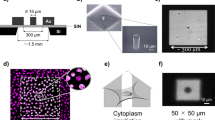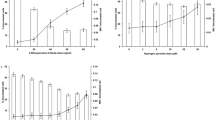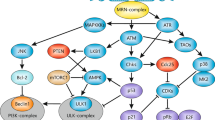Abstract
Plateau-phase Chinese hamster V79 cells were exposed to various concentrations of adriamycin (0-21 micrograms ml-1) in conditioned medium from plateau-phase cultures (C-med). Cells were plated for colony formation, either immediately after adriamycin treatment or after a 24 h incubation either in fresh medium (F-med) or C-med. A potentiation of cell killing was observed in cells plated 24 h after treatments which was larger for cells incubated in F-med than for cells incubated in C-med. Trypsinization of the cells and replating for 24 h in the same volume of medium (total amounts of cells) but at lower surface density to reduce intercellular contact, did not modify the killing potentiation observed after delayed plating. Four to 6 changes of medium, carried out at 1 h intervals, starting immediately after treatment, led to an elimination of the killing potentiation otherwise found in cells kept after treatment in F-med and resulted in survival levels similar to those of cells plated immediately after treatment. On the other hand, survival levels higher by a factor 1.5 to 10 than those obtained for cells plated immediately after treatment were observed for cells kept in C-med when four medium changes were carried out during the first 5 h of the 6 or 24 h post-treatment period. Incubation with 150 microM beta-arabinofuranosyladenine (araA) for 6 h (C-med) after exposure to adriamycin (4 changes of medium at 1 h intervals) prevented the increase in survival observed after incubation in C-med but also caused an additional potentiation in killing resulting in survival levels lower than those of cells plated immediately after treatment. These results are interpreted as indicating the induction by adriamycin of potentially lethal damage (PLD), sensitive to araA, similar to that observed after exposure to low LET ionizing radiation. Repair and/or fixation of this form of PLD can only be shown if precautions are taken to circumvent toxicity induced by adriamycin released from the cells during the post-treatment time interval, for example, by frequent changes in medium.
This is a preview of subscription content, access via your institution
Access options
Subscribe to this journal
Receive 24 print issues and online access
$259.00 per year
only $10.79 per issue
Buy this article
- Purchase on Springer Link
- Instant access to full article PDF
Prices may be subject to local taxes which are calculated during checkout
Similar content being viewed by others
Rights and permissions
About this article
Cite this article
Iliakis, G. Evidence for induction and repair of potentially lethal damage in plateau-phase V79 cells after exposure to adriamycin. Br J Cancer 55, 381–384 (1987). https://doi.org/10.1038/bjc.1987.76
Issue Date:
DOI: https://doi.org/10.1038/bjc.1987.76



